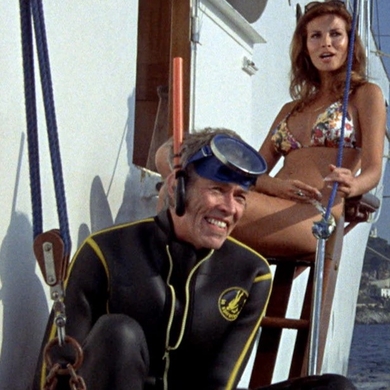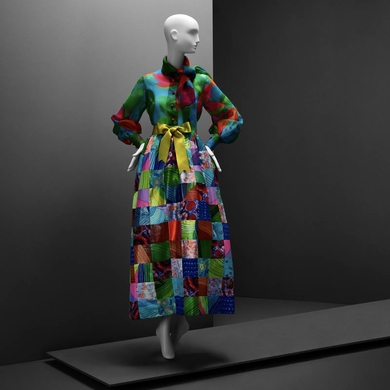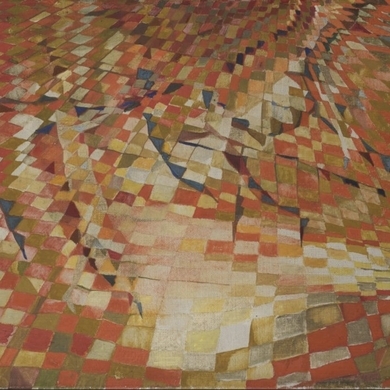Dan Flavin worked in a single medium: industrially manufactured fluorescent tubes. Wishing to break free of picture frames, pedestals, and conventional display strategies, he created an entirely new art form. Flavin made his first piece in 1963: on the wall of his studio he fixed a single tube at a 45-degree angle. Flavin declared it art when nobody else would, but soon the art world caught on, hailing him as a pioneer of Minimalism. The medium’s built-in limitations—the tubes were only available in certain colors, widths, and lengths—pushed Flavin to rethink the relationship between his art and the space it inhabited. How could he subvert the expected? How did the viewer, whose body interacted with the lights, become part of the piece itself? His vocabulary of “corners,” “barriers,” and “corridors” was born. The first of Flavin’s “barrier” sculptures was greens crossing greens (to Piet Mondrian who lacked green), in which the light fixtures literally bar viewers from entering the gallery. The exhibition at the Kunstmuseum Basel focuses on the roles of the people and events in Flavin’s titles—in other words, the human features that slip in front of the light. —Clara Molot
Arts Intel Report
Dan Flavin: Dedications in Light

Dan Flavin, monument 4 those who have been killed in ambush (to P. K. who reminded me about death), 1966.
When
Mar 2 – Aug 18, 2024
Where
Etc
Photo: Kunstmuseum Basel



